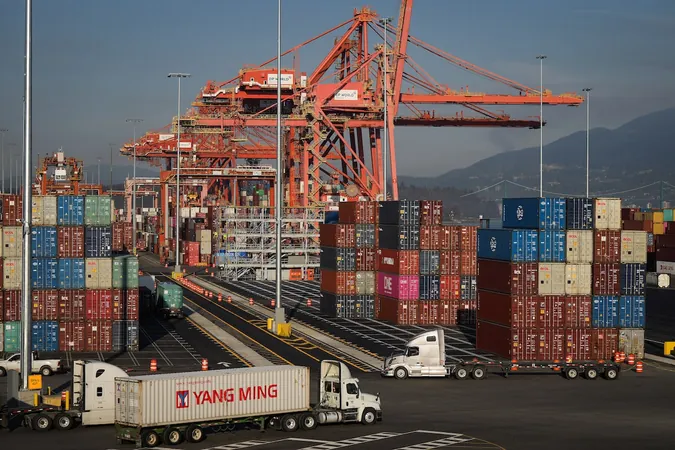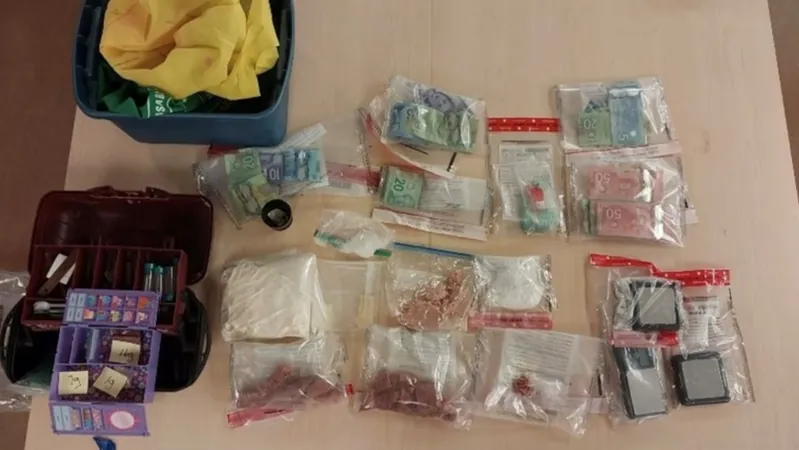
Scientists Warn: A Catastrophe Looms as Space Junk Piles Up in Orbit!
2024-10-09
Author: Benjamin
An Overcrowded Orbit
As reported by LeoLabs, a company specializing in orbital mapping, our planet is swarming with nearly 30,000 pieces of debris larger than a softball. Darren McKnight, a senior technical fellow at LeoLabs, describes the growing situation as a "ticking time bomb," underscoring the urgency for solutions.
Deadly Debris
The significant risks associated with space junk cannot be understated. Ceperley notes, "Any size fragment above a few millimeters is likely lethal to astronauts." So far, no human lives have been lost, but there have been close calls. For example, in 2021, a small piece of debris punctured the Canadarm2, a robotic arm on the International Space Station (ISS), showcasing how real the threat is.
Historic Negligence
The situation is compounded by a lack of international cooperation and the historical negligence of space-faring nations. The remnants of past rocket launches litter low-Earth orbit, and as recently as June 2022, two discarded rocket stages — one from the United States and another from the Soviet Union — narrowly avoided a collision, coming within 500 feet of each other. This incident highlights the urgent need for debris management. The potential fallout from a collision could trigger a domino effect, known as Kessler Syndrome, which could make certain orbits unusable for generations. This phenomenon is exacerbated by the competitive nature of space exploration, particularly with emerging players like China pushing further into orbital missions.
A Call for Unity
Experts are urging for immediate international collaboration to tackle the mounting debris, but the path forward is fraught with challenges. Ian Christensen from the Secure World Foundation notes, "The biggest diplomatic challenge is getting the U.S., Russia, and China—the primary contributors to space debris—to remediate their large debris objects." Failure to act could doom our access to space. The risks are too great to ignore, and as the famous saying goes, "we’ve seen that movie before."
Looking Ahead
As the situation advances, scientists continue to explore innovative solutions, such as debris removal technologies and stricter guidelines for future launches. For instance, Japan's recent breakthrough in developing the world's first wooden satellite potentially illustrates a shift towards more sustainable technologies in space. As the global community watches closely, the question remains: Will we take action before it’s too late? The clock is ticking, and the stakes have never been higher in the fight against space debris. Keep your eyes on the skies!









 Brasil (PT)
Brasil (PT)
 Canada (EN)
Canada (EN)
 Chile (ES)
Chile (ES)
 España (ES)
España (ES)
 France (FR)
France (FR)
 Hong Kong (EN)
Hong Kong (EN)
 Italia (IT)
Italia (IT)
 日本 (JA)
日本 (JA)
 Magyarország (HU)
Magyarország (HU)
 Norge (NO)
Norge (NO)
 Polska (PL)
Polska (PL)
 Schweiz (DE)
Schweiz (DE)
 Singapore (EN)
Singapore (EN)
 Sverige (SV)
Sverige (SV)
 Suomi (FI)
Suomi (FI)
 Türkiye (TR)
Türkiye (TR)